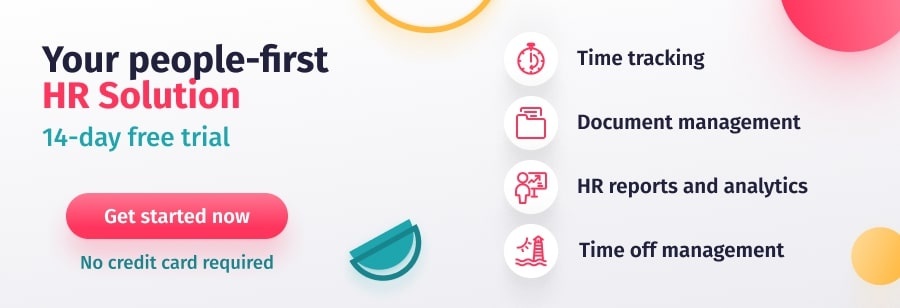In this article, we’ll discuss the key initiatives People Teams are applying to meet the unique HR challenges presented by the pandemic. No time to read? Listen to the recording below.
The ongoing Coronavirus or COVID-19 pandemic swept the world in a matter of weeks, drastically changing the lives of millions. The United States declared a national State of Emergency on March 13th and citizens have been asked to shelter-in-place, restricting their outings to only the essentials.
In these difficult times, many businesses are struggling to keep their doors open and all must find ways to keep their employees safe, comfortable and productive. The days ahead will present some of the most significant HR challenges of our time. Identifying and implementing effective employee policies and support may make or break businesses in the coming months of uncertainty. There have arisen many HR challenges during covid, as this pandemic has turned normal business functioning upside down. However, those HR teams that rise to the occasion will be integral in leading and guiding businesses through the storm.
✅ Coronavirus Resource Pack – Resources to Help Companies get through this Difficult Time!
HR Challenges During the COVID-19 Outbreak
The HR challenges managers face vary with their company’s location, sector and size, but it is clear that many businesses will have to tighten their belts. HRM challenges during covid include organizing people to work remotely, supporting employees’ mental health and wellbeing, motivating and engaging employees, to name a few.
Furthermore, instead of laying off workers or slashing wages, companies are seeking alternate corporate strategies such as using technology to support work-from-home or reviewing costs to stretch the budget.
Companies have also been asked to offer more generous and flexible benefits packages- and the government might be able to help out with that. We’ll touch on the Families First CoronaVirus response act (HR 6201) later.
How can HR leaders best motivate and support employees?
Provide direction, confidence and resilience.
Employees look to leaders for reassurance, especially in times of instability. It is important that those in leadership roles communicate clearly with managers and staff and demonstrate a clear commitment to employee health and business sustainability. Let employees of all levels know the current plan and possibilities for the future.
Understand that employees are receiving conflicting forecasts and advice from the local, state, and national governments –not to mention social media disinformation. Contextualize updates from the World Health Organization (WHO) and Center for Disease Control (CDC) with specific instructions on how your company will be adapting recommendations and moving forward.
Just as politicians who lead during times of international conflict or emergency benefit from increased approval ratings, a phenomenon known as the “rally effect,” company leaders who can demonstrate resilience can improve employee engagement in a difficult time and up employee retention in the long term.
Be flexible
One of the biggest HR challenges during covid that companies are regularly facing is the scope of the disruption. With schools and non-essential businesses closed or moving online, employees will need flexibility and understanding as they try to re-establish a work-life balance. Companies can support employees who are quarantined or self-isolated by expanding paid time off policies or facilitating them in working remotely.
COVID-19 has already galvanized many large companies to improve employee benefit packages. Daren Restaurants, which owns Olive Garden and employs 170,000 workers, has said that it will henceforth offer paid sick leave on a permanent basis. Walmart, Apple, and McDonald’s also revamped their leave policies in response to the outbreak.
The Families First Coronavirus Response Act (FFCRA) which passed on March 18, 2020, expanded previous laws to address COVID-19 absences. The bill provides (among other things) full-time employees of companies with fewer than 500 employees with up to 80 hours of paid sick leave and prorated sick leave to part-time employees. Employers can make sure time off policies follow national and local guidelines.
Create guidelines and support networks for those working from home
Although only 5.3% of employees worked from home in 2018, remote work has quickly become the standard model during the pandemic.
Employers moving to a work-from-home system can support employees by establishing norms and implementing a defined remote work policy that sets clear expectations for when team members are to be available, how to communicate (via email, Slack, or another platform) and exactly what each team member is responsible for. Make sure employees have the tech they need to perform the tasks expected of them.
Most importantly, give employees some breathing room to adjust to their new lifestyles. If their work doesn’t need to be done during normal business hours, managers might do well to let employees create their own schedules and determine what works best for them and their families. These are difficult times and individuals may be struggling with unwell family members or general anxiety.

Keep workers safe by maintaining a healthy work environment
For workers at essential businesses where work-from-home is not possible, it is up to the HR departments to prioritize the health and safety of their workers. Businesses should make sure their practices are in line with recommendations from the CDC and consider nominating a workplace coordinator to manage office policy surrounding COVID-19. Keep employees safe and well by educating employees about transmission risks:
- Offer training and development to establish hygiene regulations (washing hands with soap and water for 20 seconds, etc.).
- Establish policies and practices for social distancing.
- Prominently display posters illustrating respiratory etiquette (coughing, sneezing) and hand hygiene.
- Perform routine environmental cleaning and disinfection.
- Provide no-touch receptacles and hand sanitizer.
Some key HR challenges that managers must consider is how they will cope if absenteeism spikes (if there is an outbreak in the office or if employees must care for family members) and create a clear plan of action.
Look for opportunities amid adversity
Facing the HR challenges presented by COVID-19 is a tall task. But try to think of COVID-19 as an opportunity to show your company’s empathy and demonstrate how it values its employees. Crisis Management is an integral part of an HR team’s repertoire, and the ability to drive and support strong business decisions even during times of great turmoil will prove invaluable.

Q+A: HR Issues and Legislation During COVID-19
What is the Families First CoronaVirus Response Act (HR 6201)?
This relief package was signed into law on March 18th and offers protection to employees who need to take sick leave, preventatively self-quarantine, or take care of relatives.
When does the HR 6201 go into effect?
It goes into effect on April 2nd. According to the US Department of Labor, companies will have to inform employees of their rights to expanded sick leave before then.
Who does this affect?
Most of the stipulations of HR 6201 apply to employers with fewer than 500 and more than 25 employees.
What does the act stipulate?
For more in-depth information about the law and how it affects you, make sure to check with a lawyer. In a very simplified form, the bill ensures:
- 12 weeks job-protected leave at 2/3 pay.
- 14 days paid sick leave for self-quarantine or isolation, caretaking, or childcare.
- Tax credits for employers providing paid leave and sick leave.
With careful planning, empathy, and responsiveness, employers will be able to overcome the HR challenges during COVID-19 and leverage them to become a stronger company.
Easily face the most problematic HR Challenges with HR software. Get started with a 14-day free trial.
Written by Valerie Slaughter; Edited by Tanya Lesiuk



Love the ideas. Thanks for sharing.
Thank you Joyce. Glad to hear you found it valuable :)
I wish more HR managers would read this article, especially the “These are difficult times and individuals may be struggling with unwell family members or general anxiety.” part :/
Thank you Simon. We appreciate your comments.
I liked the article. Distance is very important such as the stuffs we touch daily.
Keeping distant and mindful is key for the moment.
Some good ideas shared here. I think it is really important to support employees with the new ways of working by giving them breathing room so that they can adjust.
Thank you Kate! I’m glad you enjoyed the information we shared.
Thanks for these great ideas. I learned a lot from here.